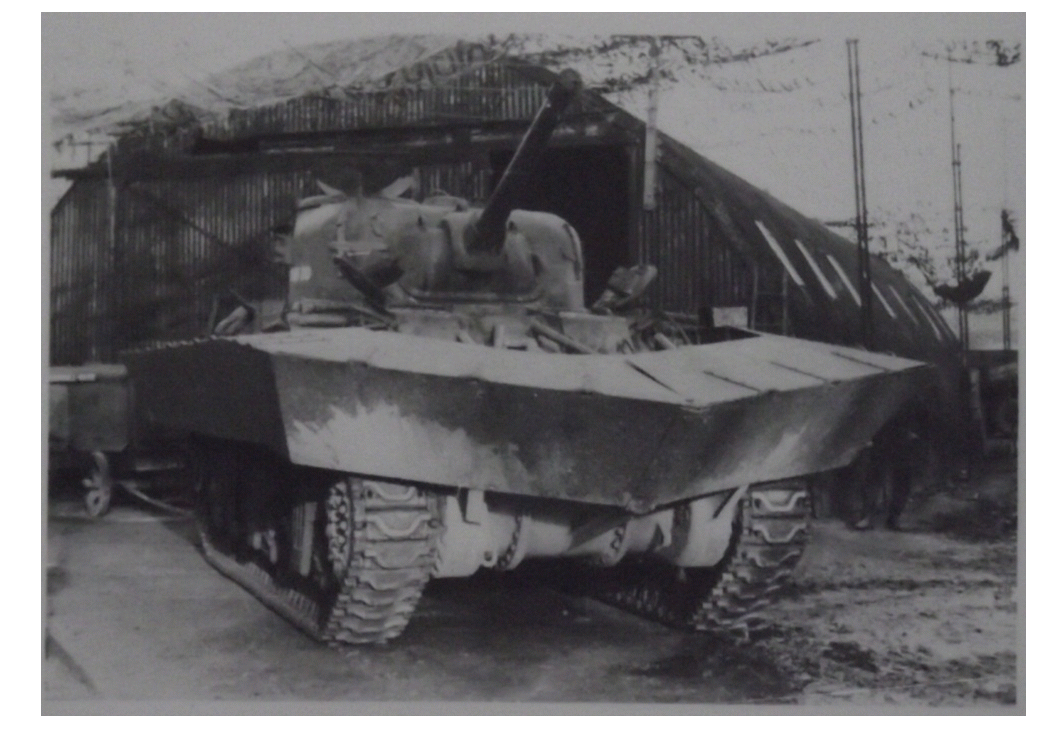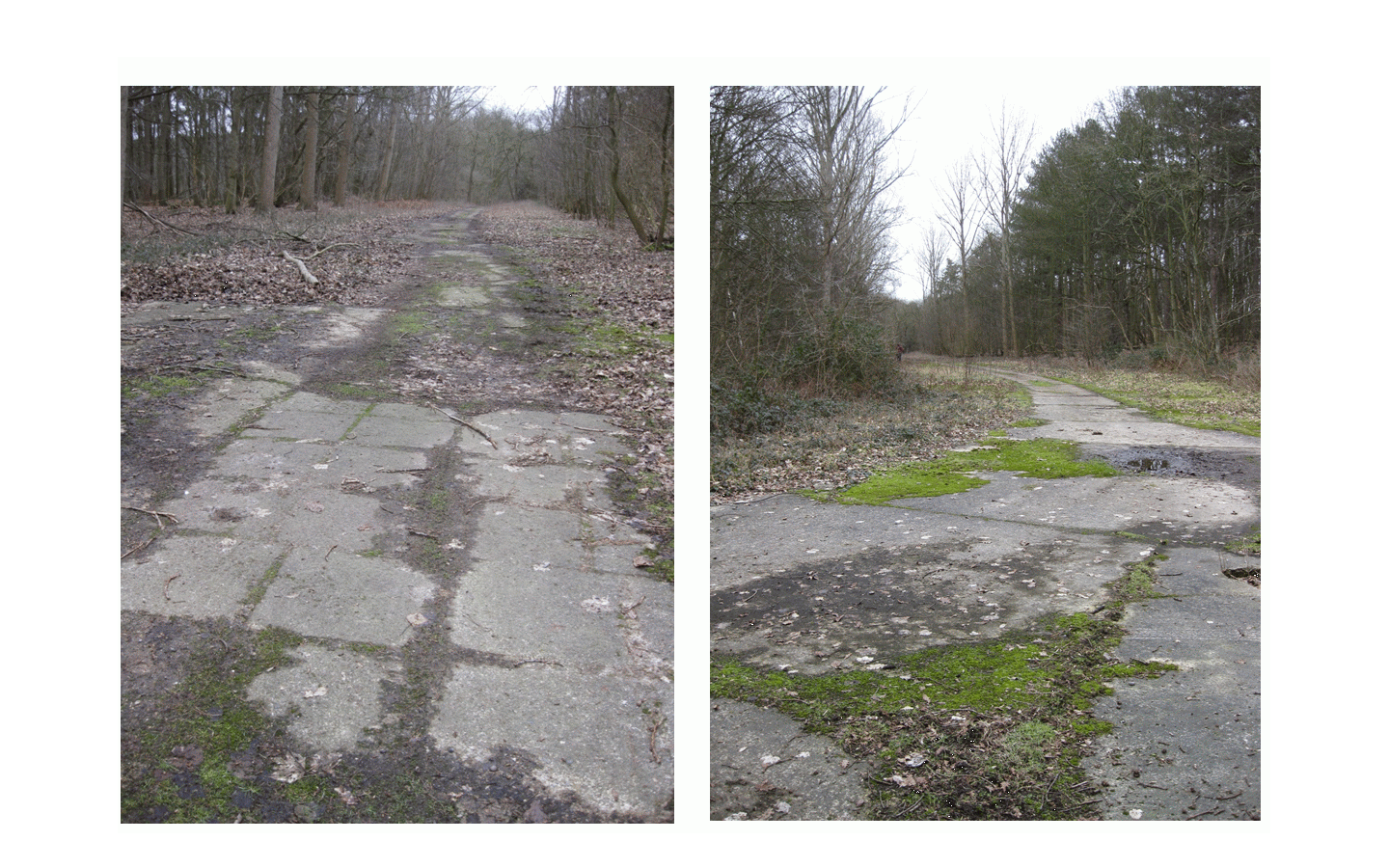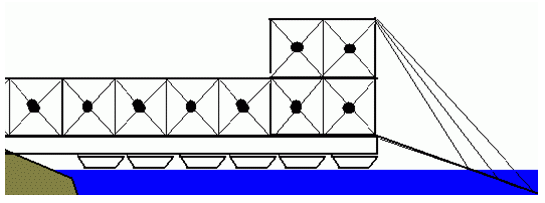


The Freshwater School was established in April 1943. The inland 2.5 mile long lake provided calm conditions to enable crews to be introduced to Valentine DDs. The following infrastructure was constructed at Fritton:
The 760th Artesiam Works Company undertook much of this work. The cost of building work at Fritton was £16,000, equivelent to about half a million pounds today. Camouflage netting was erected over the tank park, and a tripple dannert wire fence surrounded the site (about 7 miles). The site was strictly off limits to locals, and all involved in training were required to sign the Officals Secrets Act. Visiting crews were billetted in Great Yarmouth, whislt the full time instructors, REME and Sappers resided on site.


Maintenance Sheds & Concrete Tank Park
Following attending a lecture about the DDs, and the need for secrecy, crews were introduced to the drills of waterproofing, maintaining and inflation of the tanks and thier screens. All the belly plates, inspection covers, bolts, rivets and seams were attened to with a compound called Boscoprene. Waterproofing would last for about 10 days. To ensure the tank hulls were sealed, each crew would drive their Valentine DDs into a pool dug near the lake, switch off their bilge pumps for 15 minutes and inspect for leaks. These drills were religiously carried out by the trainees.
The rear propellers, running gear and brakes required frequent lubrication, and the screens, pillars and hyrdaulic systems needed to be checked, inpsected and maintained. Crews would learn how to repair the screens and make patches should the screens get torn. In addition they would become familair with the periscopes, bilge pumps and many other aspects of DD tank maintenance.
Crews would learn to use specially designed Amphibious Tank Escape Apparatus (ATEA). The equipment consisted of a chest mounted 7 litre capacity bag, fitted with a Protosorb rebreather, which could absorbed Carbon Dioxide. Crews would undertake basic training at a local swimming pool before practicing drill from a submerged tank: Crews would take up thier position in a cut down hull of a Valentine, located at the bottom of a concrete lined well, about 18 feet deep. Water would enter the chamber via 24inch diameter pipes, flooding the tank and chamber with 2500 gallons of water. During this time, the crews would fit their mouth piece and nose clips, and wait for the chamber to fill. They would then exit the tank via a well rehearsed drill: Commander first, then gunner and finally the driver.
When the Sherman DD was developed, a second chamber was constructed in November 1943 to enable crews to escape from the hull of a cut down Sherman. A film exists of this training and can be seen on the Imperial War Museums Website. Click here to take you to the film.

Crews would initially learn to swim with the DDs by entering the lake adjacent to the tank park, and learning basic seamanship. Once proficient, they would drive their tanks to an inflation area near to the mock up Landing Craft Ramps. Their screens would be inflated, and with the utmost care, the tanks would descend the ramps. Drivers had to keep in first gear, with their foot hovering over the brakes. As the tank became waterborne, the driver would be commanded to engage third gear, lower the propeller and swim in formation to an assualt beach on the opposite bank.
Here the crews would perfect the drill of transition from DD tank to fighting tank. For whilst the launch would be undertaken at distance from the enemy shore, the beach assault would be under fire. Crews would hone their skills in lowering the screens, raising the propeller, rotating the turet, and advancing up the beach. Smoke grenades were used to make the practice more realistic. Crews would also learn the same techniques operating at night as well as during the day. Following 10 days of waterborne training the crews were ready for Saltwater Training.

Fritton Lake is owned by the Somerleyton Estate. The northern shore is managed as a Country Park, with boating and facilities adjacent. However much of the remainder of the Estate is managed for conservation, farming, forestry or sport and access is not permitted. There are a number of public rights of way that cross the Estate, but not in the vicinity of the training areas.